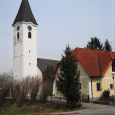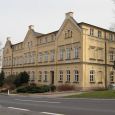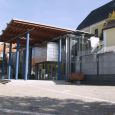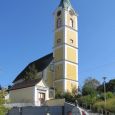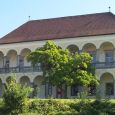Ansfelden
Advertisement
By air
Its proximity to the airport Linz also offers access from the air.
By road
In the city of Ansfelden there are two important inter-regional transport hubs:
The motorway junctions in the district of Linz-free village, where the A 7 Muhlkreisautobahn of the A1 western motorway branches off toward the north.
The highway in the suburb of Mount Haid (a part of the node is located in the municipality of Pucking ), where the A25 Welser motorway branches off from the A1 motorway in northwest direction.
By Railway
In the village there is the railway station Krems Nettingsdorf. The running through it Pyhrnbahn is available here in the south ( Selzthal removed) only single track. Between 1988 and 1995 were conducted between Linz Hbf and Nettingsdorf fast trains, the southern terminus was extended with each timetable period: First, to pipe in Krems Valley, then to church in the village of Krems. The station is also a shunting Nettingsdorf for lying in close proximity and connected by a siding mill Nettingsdorf.
Parish church on the hill Krems
The parish church on the hill in Krems is a late Gothic-style Roman Catholic church buildings in the town of Mountain City community Ansfelden. It is surrounded by a few houses on a hill and is one of 15 church buildings in Upper Austria, to St. Vitus are dedicated.Over the year no records exist, but can be found in the parish chronicle of 1902, evidence of construction period 1394-1616. It is likely that the White Mountain Volkerstorfer of the builders of the church building were. The church building is a neo-Gothic high altar in 1898, designed by sculptor Ansfelden Oberhuber. In 1984 the interior was renovated in 1993 the tower.
Anton Bruckner's birthplace
Not only the lovers of classical music is Ansfelden by the birthplace of the composer Anton Bruckner known. He was born on 4 September 1824 and grew up in Ansfelden.
Anton Bruckner Center (ABC)
In 1996, in commemoration of the 100th Death of Anton Bruckner, the 'Anton Bruckner Center (ABC)' erected in the center of Ansfelden, which is used as a conference center. Besides the direct abbreviation of the name, the letters also represent the work of Bruckner as a teacher.
Symphony hiking trail
In honor of the composer was created at the symphony, hiking path, which from the birthplace of the musician in the city center through meadows and forests in the neighboring parish of St. Florian near Linz - one of his places of activity as an organist and his grave site - results.
Agricultural Vocational and Technical School Ritzlhof
The Agricultural Vocational and Technical School Ritzlhof (LWBFS Ritzlhof) is a country of Upper Austria operated training center in Ansfelden, Upper Austria. The school building was erected in 1875 (for the country's agricultural school in Ritzlhof on the mountain) and includes classrooms, training areas for floral, gardening and landscaping activities, and a 190 bed comprehensive boarding house with its own kitchen. A recreational area with a show and themed gardens and a nursery teacher supplement the educational facilities.
Kath Parish Church of St. Valentin
The beginnings of the parish should Ansfelden in the 11th Century are, for the first time a document of 1113 confirming their existence. By 1700, together with the parsonage, the existing parts of the church were renovated, expanded and Baroque. Today it consists of a one-aisled, 6-jochigen nave with pilasters, which is a flat barrel vault with lunettes bear. The lower part of the late-Gothic tower was increased in 1728 and with a pointed helmet provided. The furnishings of the church is in the second half of the 19th Century. Worth mentioning are the sculpture "Madonna and Child" from the 16th and the "St. Barbara "from the 17th Century
Vicarage
Carlo Antonio Carlone built from 1689 to 1707 on behalf of Rev. Matthew from Weissenberg and later dean of the St. Florian monastery, this magnificent, highly visible parsonage. The face side facing the valley is in two superimposed arcades resolved, the lower one with pillars, with the upper columns and stucco decorated ceiling. Walls and ceilings of Baroque hall on the first floor are also nice with stucco adorned.
May - August


